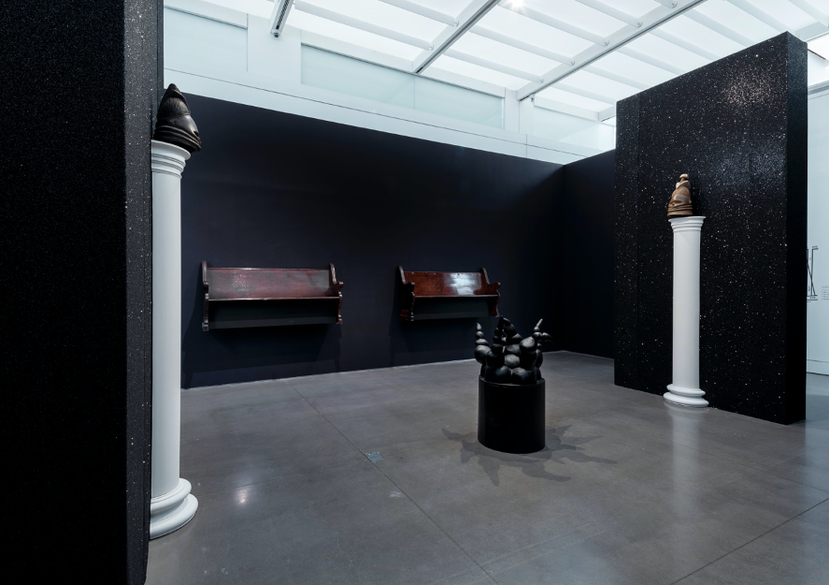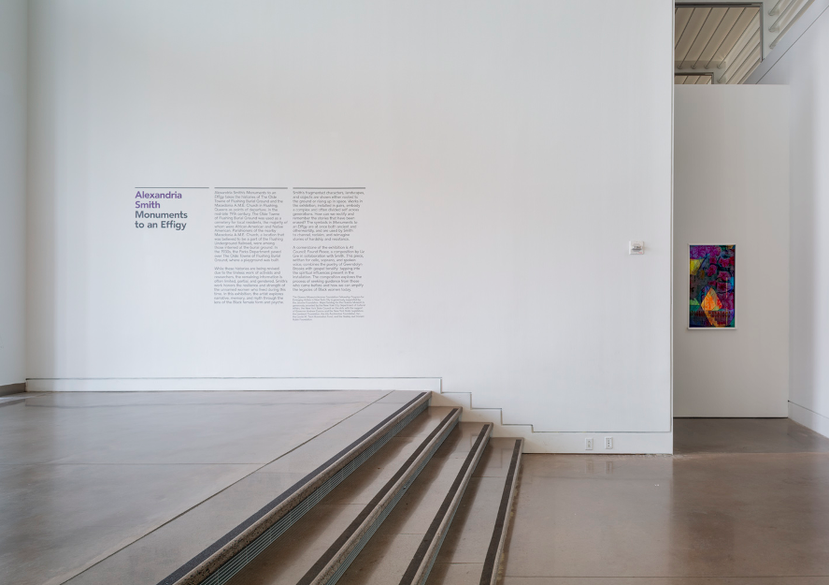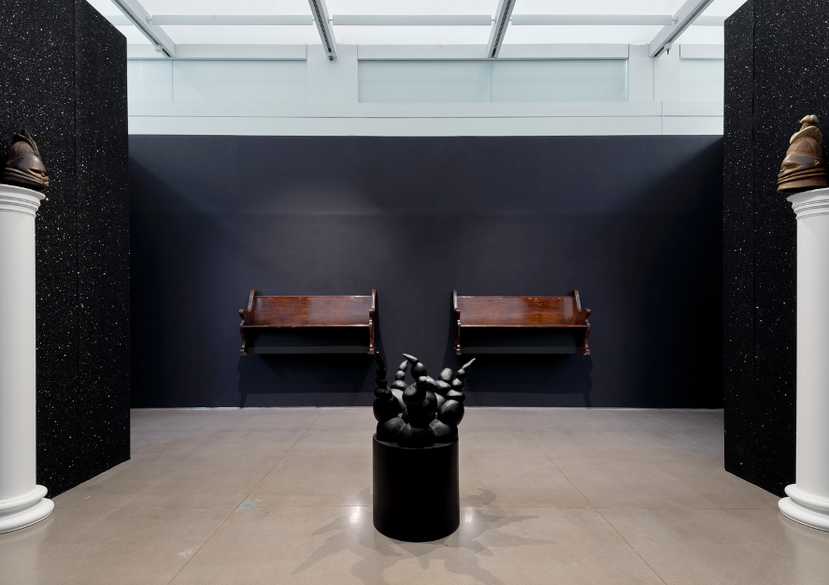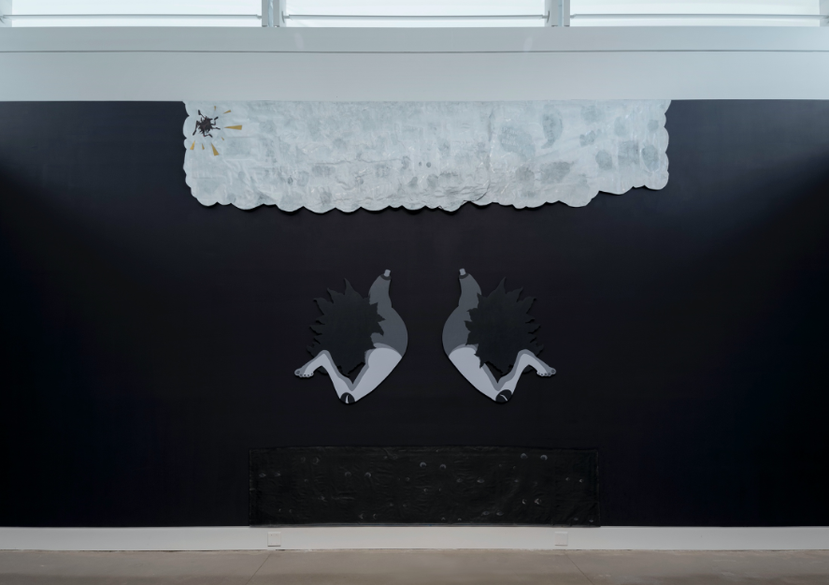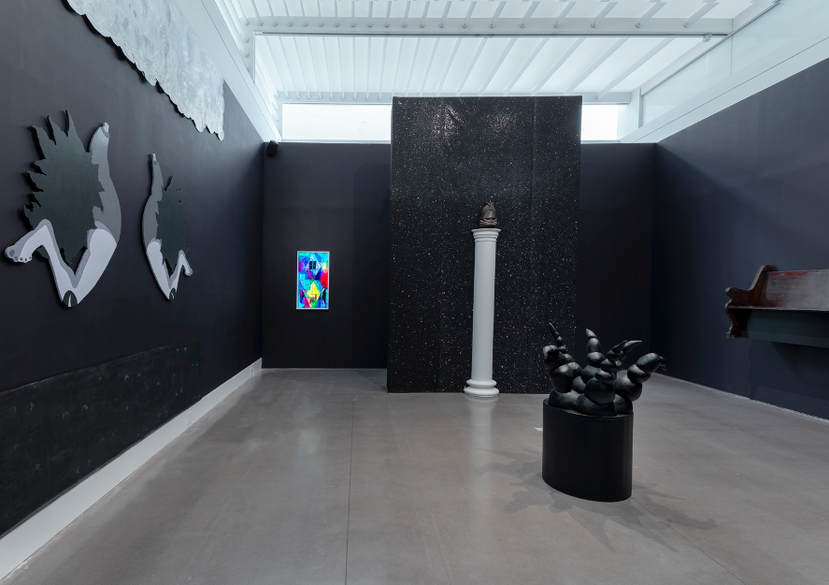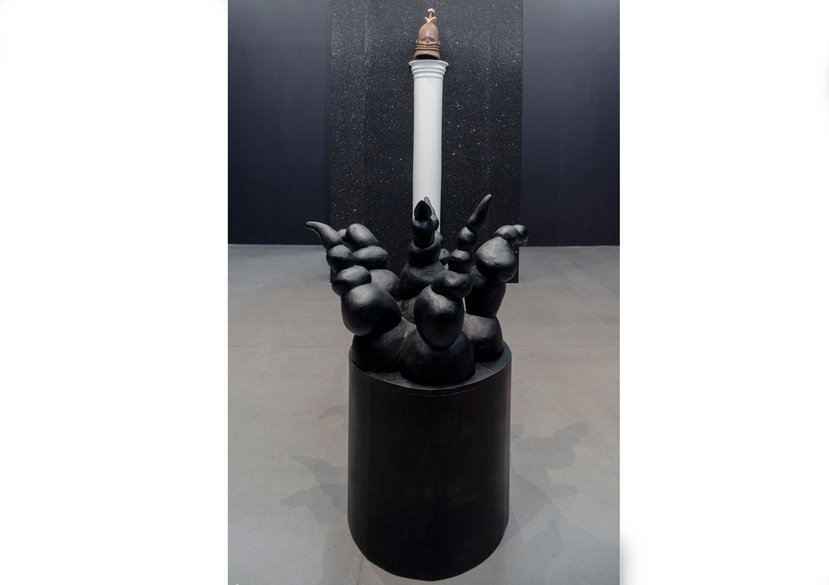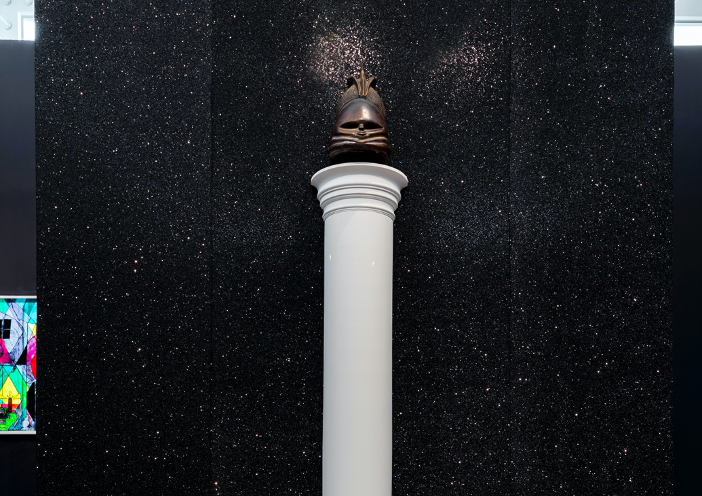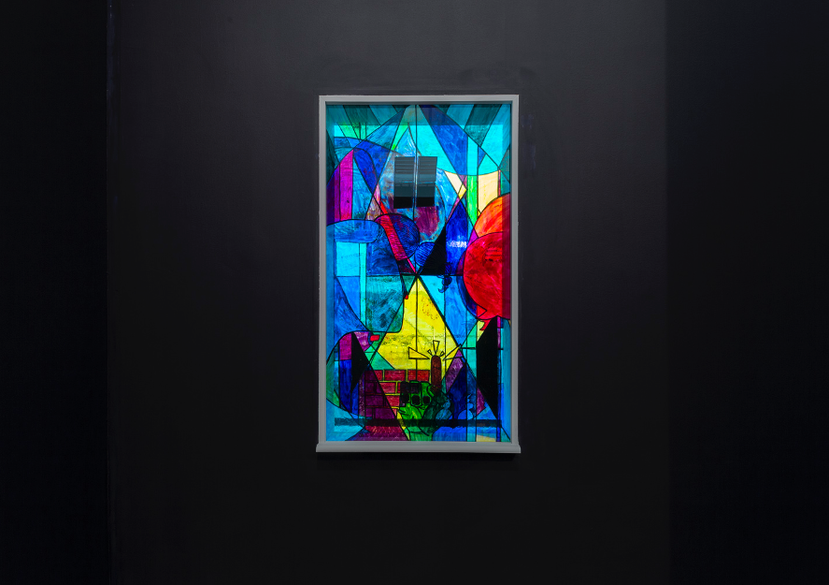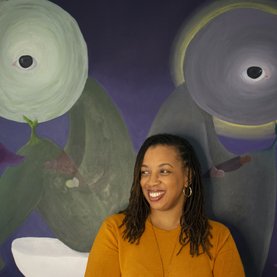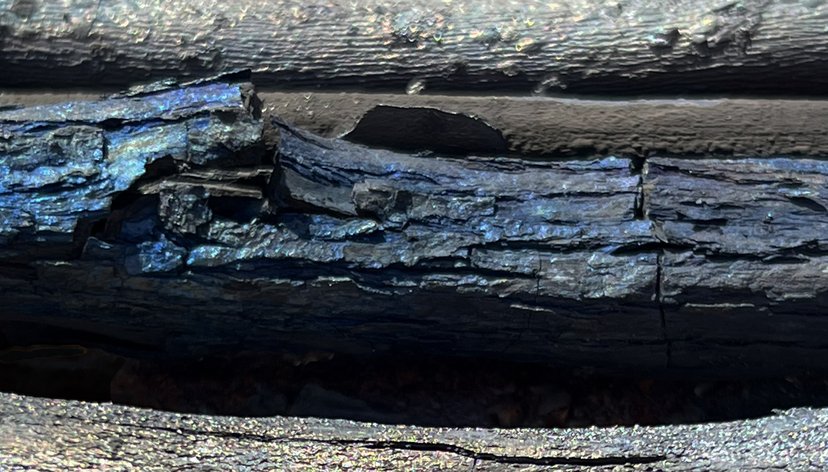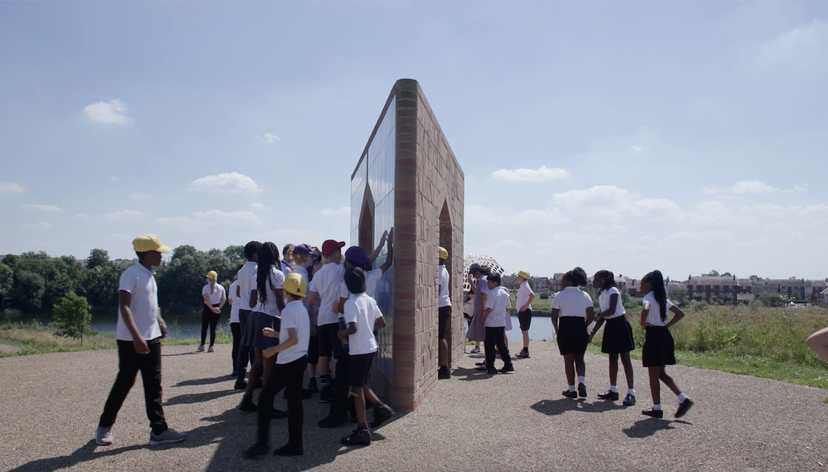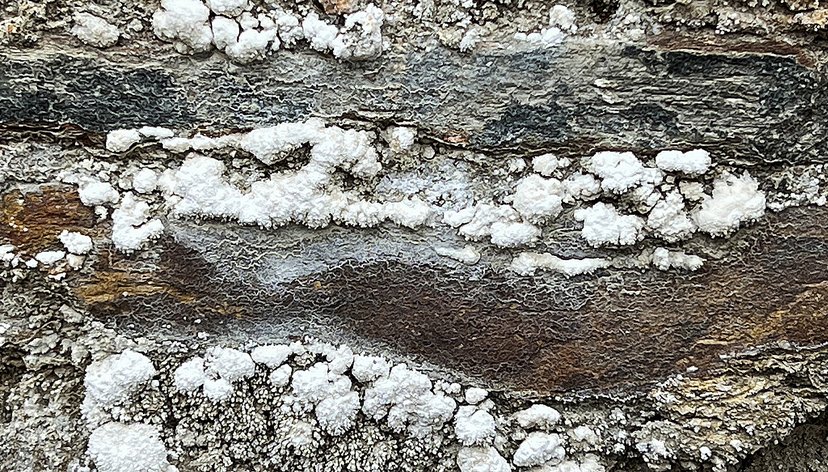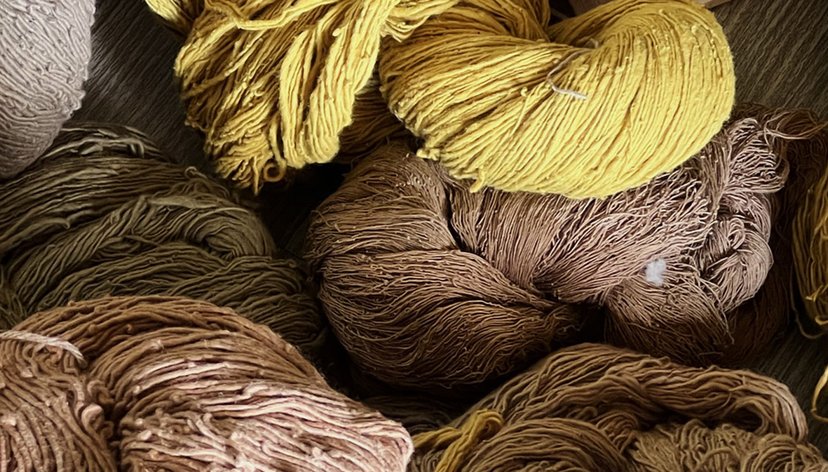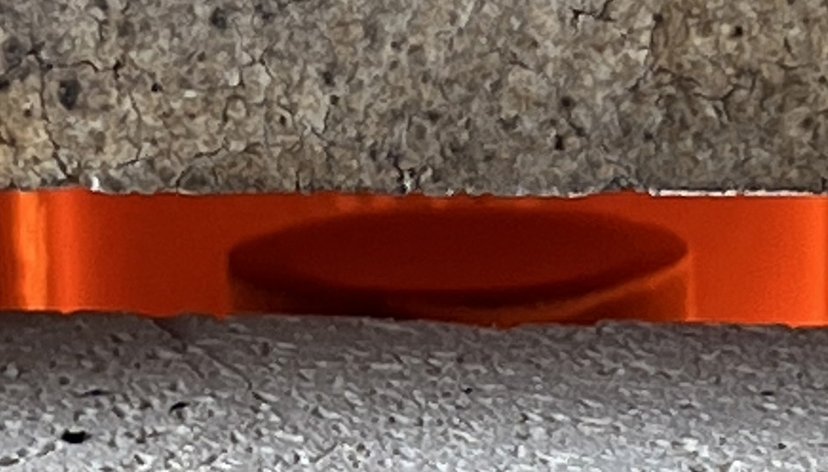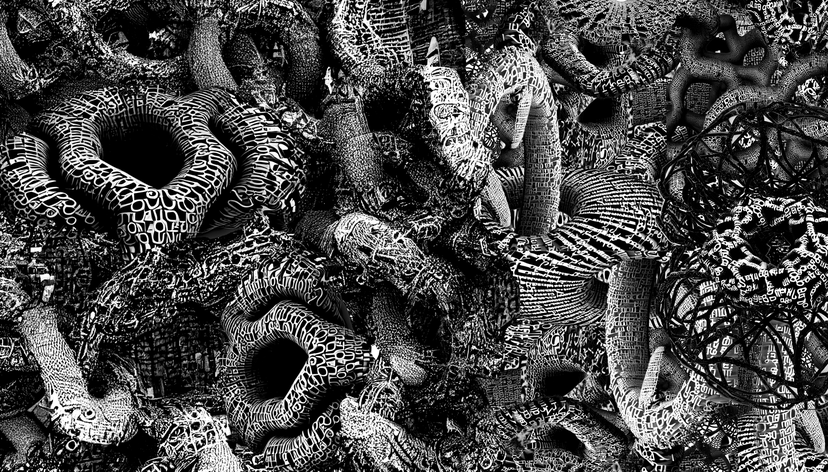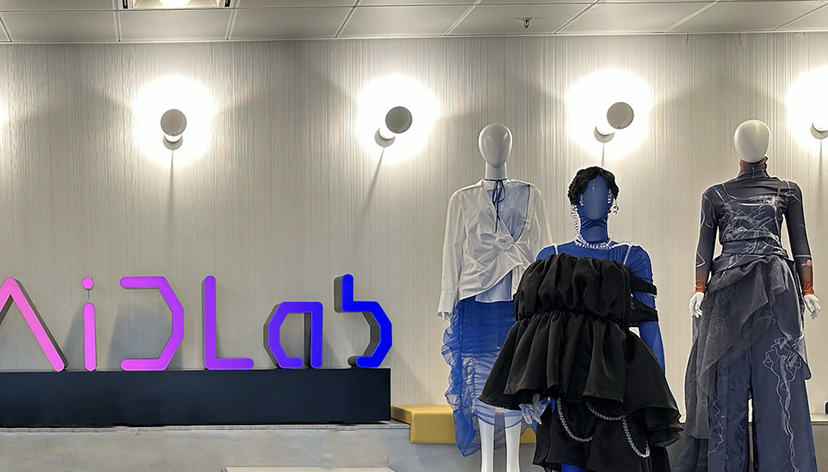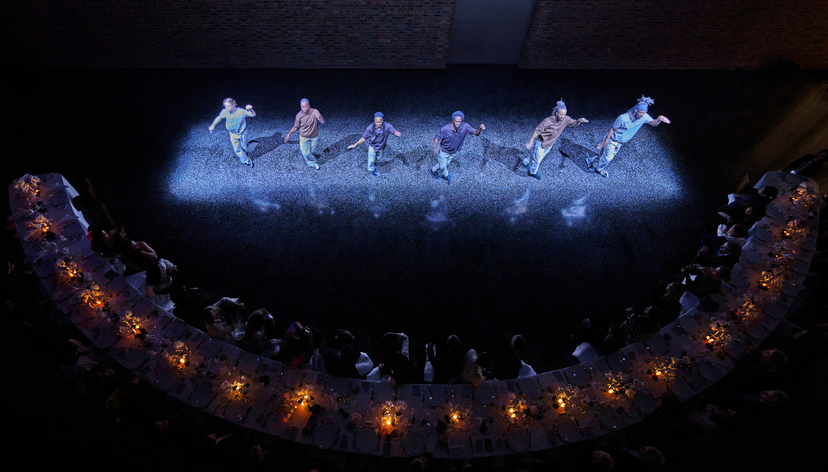
This research project combines oral history interviews and research with experimental approaches to sonic installation, sculpture and painting using the languages of painting and printmaking in the form of a travelling, immersive, multi-room installation.

This research project combines oral history interviews and research with experimental approaches to documentary filmmaking, found objects, sculptures and the languages of painting and printmaking in the execution of an installation. By utilizing visual storytelling through a traveling, immersive, multi-room installation, a complete and authentic history of the arts can be shared and widely disseminated in a unique and innovative manner.
A cornerstone of the exhibition is At Council; Found Peace, a composition by Liz Gre in collaboration with Smith. This piece for cello, soprano, and spoken voice combines the poetry of Gwendolyn Brooks with gospel tonality and explores the process of seeking guidance from those who came before.
The research challenges the expectations of whose stories are permitted to be told in institutions and where by illuminating the erased stories of the African-American and Native American people interred at The Olde Towne of Flushing Burial Ground
Key details
Gallery
More information
The project
Alexandria Smith’s Monuments to an Effigy takes the histories of the Olde Towne of Flushing Burial Ground and the Macedonia A.M.E. Church in Flushing, Queens as points of departure for an exhibition that evokes an altar. In the second half of the nineteenth century, the Olde Towne of Flushing Burial Ground was a burial place for African-Americans and Native Americans. Parishioners of the nearby Macedonia A.M.E. Church, a hub for Flushing’s historic African-American community, were among those interred there. In the 1930s, the Parks Department paved over the site, building a playground in 1938. But—due to the tireless work of many—the site was recognized for its original purpose in 2006 and is now a meditative area that respects the hundreds still buried there and a new commemorative plaza will open in 2020.
Smith explores narrative, memory, and myth through the lens of the Black female form and psyche. For this exhibition, the artist responds to the lives of those who were buried at the site. Of the four marked gravestones discovered at the burial ground, only males are listed. Smith’s work honors the unnamed women laid to rest at the Burial Ground as well as those who participated in the Underground Railroad network active in Flushing which included the Macedonia A.M.E. Church.
The artist’s fragmented characters, landscapes, and architectural surrogates pay tribute to these histories by rooting or lifting themselves in space. Eyes, pigtails, masks, limbs, breasts, and fingers either sprout from the ground and defy gravity. Smith’s works, installed in pairs or doppelgängers, embody a complex and often divided self across generations. How can we rectify the stories that have been erased? The symbols in Monuments to an Effigy are at once ancient and otherworldly, as the artist channels the ancestors whose stories continue to be reclaimed and reimagined.
A cornerstone of the exhibition is At Council; Found Peace, a composition by Liz Gré in collaboration with Smith. This piece for cello, soprano, and spoken voice combines the poetry of Gwendolyn Brooks with gospel tonality and explores the process of seeking guidance from those who came before. As Smith’s work connects with the spiritual realm, her visions of Black women in moments of empathy, joy, and pain recognize the resilience and strength that will continue to shape history.
Awards
Queens Museum-Jerome Foundation Fellowship for Emerging Artists
Selected by Lumi Tan, Curator at The Kitchen, New York; Anthony Elms, Daniel and Brett Sundheim Chief Curator at The Institute of Contemporary Art at the University of Pennsylvania, Philadelphia; Queens Museum’s Director of Exhibitions, Hitomi Iwasaki; QM Assistant Curator, Sophia Marisa Lucas; and QM Assistant Curator for Public Programs, Lindsey Berfond.
Activities
Monuments to an Effigy, Apr 7 - Aug 18 2019, Queens Museum, New York USA
Work details and research findings
On Being: Portals, 2019 On Being: Egress, 2019 Acrylic on Plexiglas
The panel facing outward is Portals; inward is Egress. Both refer to church stained glass, African-American freedom quilts (believed to have communicated information along the Underground Railroad), and African fractals (geometric patterns). In this two-sided, two- dimensional object, Smith presents a female character in formation
At Council; Found Peace, 2019. Music composition for cello, soprano, and spoken voice, 13 min, 31 seconds
Liz Gré in collaboration with Alexandria Smith Vocals: Liz Gré. Cello: Maurisa Mansaray Established in 1811, the Macedonia A.M.E. Church in Flushing, Queens, is believed to have served as a station on the Underground Railroad, which brought enslaved people to freedom in northern states and Canada. The pews refer to this history. They also allude to late nineteenth-century Macedonia parishioners who were buried at the Olde Towne of Flushing Burial Ground nearby. These unnamed African-American and Native American women are evoked through a music composition written for cello, soprano spoken voice. The piece explores the process of seeking clarity from ancestors, mothers, and heroes who thrived and persevered in another time.
GloryGlory, 2019 Mixed media collage installation on canvas and wood
The Olde Towne of Flushing Burial Ground, just four miles from the Queens Museum, was used in the nineteenth century first for victims of epidemics and then by the local African- American and Native American community. Smith creates an altar for the cemetery’s unsung voices, breaking up bodies and the landscape into three tiers. The lowest tier refers to watching or being watched, and the spirits of the dead. In the middle tier, fragmented hair, limbs, and breasts make up a pair of mirrored female figures, shapeshifting in mid-air on their rise upward. These hybrid twins are at once a divided self, a symbol of otherness, and a reminder that we must see ourselves in histories like that of the Burial Ground in order to bring those stories to light. The clouds at the top include portraits of specific Black women active in late 19th century, when the burial ground was used most extensively. It also contains archival materials about the site, fragments of poems by Gwendolyn Brooks and the names of 97 individuals known to have been buried at the Burial Ground as of 1996.
UnearTHings I, 2019, UnearTHings II, 2019. Glitter fabric, polyurethane columns and found wooden masks
UnearTHings I and II juxtapose the Tuscan Doric column widely used in the ancient Roman Empire with the sowei mask of the Mende people of Sierra Leone. While the Doric columns are associated with strength 07 and masculinity, the masks are worn by women in rite-of-passage ceremonies. They endow the wearer with the power of a girl’s transition into adulthood.
The Rooting Place, 2019 Mixed media sculpture
Pigtails signal girlhood and in Smith’s work have become a common motif, making
up landscapes of their own and evoking the peaks and valleys of the Black female psyche. Here a pigtail sculpture sprouts up from the ground, having taken root in the histories that have inspired the installation. The sculpture also draws from the Effigy Mounds National Monument in Iowa, in which Native Americans built ceremonial mounds in the shape of animals as a way to connect to their ancestors and the spiritual world.
Wall/desk/Headphones
On headphones, a selection of oral history recordings with local community leaders produced by Queens Memory, including the voices of Mandingo Osceola Tshaka and Robbie Garrison of the Olde Towne of Flushing Burial Ground Conservancy; Jay Williams, lifetime member of the Macedonia A.M.E. Church; and Chief Little Fox (Samuel Steven Boyd Jr.), Sachem Chief of the Matinecock Nation Alexandria Smith selected books that have influenced her work and life. They are available to read here as part of the Queens Museum’s ongoing program From the Library Of...
On the wall, vinyl reproduction of a 1919 diagram showing what is now known as the Olde Towne of Flushing Burial Ground (formerly called the Colored Cemetery of Flushing) with names from the four remaining gravestones found at the site in that year.
On the desk, resource guide and reference books that provide context for the works on view, including historical information on the Olde Towne of Flushing Burial Ground and Macedonia A.M.E. Church, source images used in Glory Glory..., and poems by Gwendolyn Brooks
Recognition
Iterations of the show will take place during 2021-22:
- Currier Museum of Art, Manchester, NH, USA
- Figge Art Museum, Davenport, IA, USA
Hitomi Iwasaki, Director of Exhibitions and Curator, Queens Museum: “Alexandria Smith was selected as one of two 2018-2019 fellows as part of the Queens Museum-Jerome Foundation Fellowship for Emerging Artists because of both her strong and nuanced body of work in painting, collage, drawing and sculpture, which showed a clear readiness for the next step of her career, as well as a thoughtful proposal which engaged deeply with a history of a local Queens community that was rife for exploration. Alexandria's proposal also presented an exciting opportunity for site specificity and the expansion of her practice into a full gallery installation.”
New York Times
Outside the entrance to Alexandria Smith’s “Monuments to an Effigy,” a Plexiglas panel has been painted to look like stained glass. The theme of worship continues inside the gallery with two antique wooden pews that hover off the floor. They’re echoed by two found African masks perched atop imitation Tuscan Doric columns, which have been set against black glitter fabric. On another wall, a triptych of drawings and paintings by Ms. Smith suggests an ascent from the underworld to heaven, with figures whose graphically rendered body parts are arranged to make them look like angels.
The Art Newspaper
At the Queens Museum, an artist unearths the names and stories of buried women Alexandria Smith threads religious and African American cultural themes in her memorial installation
ArtSlant
Alexandria Smith’s exhibition, Monuments to an Effigy, takes the history of the A.M.E. Church and The Olde Towne of Flushing Burial Ground as a departure point for a new collage, sculpture, and sound installation. Smith will continue her ongoing exploration of narrative, memory, and myth through the lens of the Black female form and psyche. At Queens Museum, Smith’s practice of abstracting and deconstructing images of the body responds to the untold narrative of the Bunn family, whose male family names appear on the only remaining gravestones at the Flushing Burial Ground, but whose female voices have been historically silenced.
Ask a question
Get in touch to find out about School of Arts & Humanities research projects.
SoAH@rca.ac.uk

